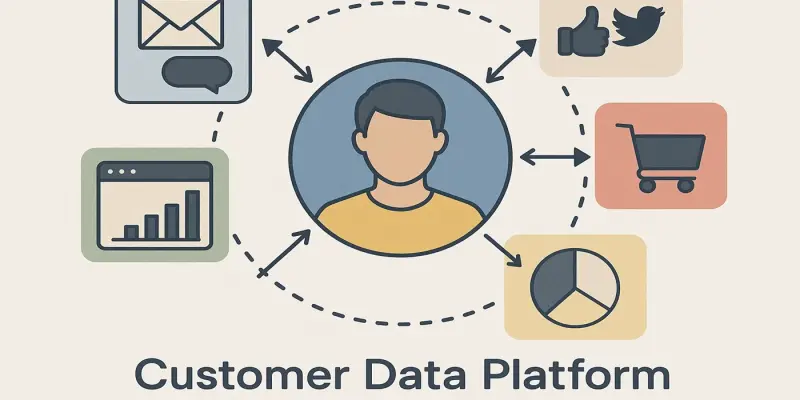In today’s increasingly digital world, the role of Customer Data Platforms (CDPs) is more crucial than ever, promising to transform how companies interact with and understand their customers. As businesses navigate the complexities of digital transformation, the ability to manage, analyze, and leverage customer data has become a competitive advantage. CDPs are stepping into this realm, providing a unified solution for managing vast amounts of consumer information, thereby enabling organizations to enhance customer experience, drive operational efficiency, and maintain a competitive edge.
Central Theme
In the midst of a digital revolution, CDPs stand out as a critical tool for industries looking to adapt and thrive. They provide the infrastructure needed to collect, analyze, and use customer data effectively, leading to improved customer interactions and optimized business processes. However, with these opportunities come challenges, such as aligning CDPs with existing systems and ensuring data privacy and security. Businesses across sectors—be it retail, finance, healthcare, or more—are exploring these questions, seeking ways to harness the full potential of CDPs to stay ahead in a rapidly evolving landscape.
Background and Importance
The landscape of digital technology has changed dramatically over recent years, with industries globally embracing novel digital solutions to remain competitive. At the heart of this evolution, CDPs have emerged as essential tools, offering a comprehensive approach to managing diverse customer data. The significance of CDPs lies not only in their ability to address immediate data management and personalization demands but also in their potential to inform broader business strategies. By facilitating personalized customer experiences and fostering improved consumer interactions, CDPs are reshaping how companies connect with their audiences on a profound level.
Research Methodology, Findings, and Implications
Methodology
The analysis of CDP impact encompassed a comprehensive approach, employing data analysis techniques to scrutinize CDP implementations across multiple industries. The methodology involved comparing key metrics such as customer engagement levels, operational efficiencies, and competitive positioning, using tools designed to measure the depth and breadth of CDP deployments. Methodical industry comparisons provided more nuanced insights, making it clear which sectors are leading or lagging in CDP adoption and impact.
Findings
The research unveiled transformative effects of CDPs across a range of industries. Success stories from sectors like retail, where companies have seen heightened consumer engagement and retention, to finance, where data analytics have improved service customization, illustrate CDPs’ potential. In healthcare, personalized patient experiences have been enhanced through efficient data management, highlighting how CDPs drive significant positive change. These findings underscore the adaptive nature and broad applicability of CDPs in diverse settings.
Implications
The implications of the wide adoption of CDPs extend far beyond immediate business practices. As industries reconfigure their models around data-driven insights, the potential for enhanced consumer relationships grows exponentially. This paradigm shift underscores a move towards more informed decision-making, considerably impacting theoretical understandings of digital transformation. CDPs are paving the way for reimagined business models where consumer data and insights are core to strategy execution and future growth planning.
Reflection and Future Directions
Reflection
Reflecting on the research processes, several challenges became apparent, notably in aligning diverse industry data within a cohesive analytical framework. While obstacles such as differing data structures were overcome with adaptive methodologies, these limitations prompted consideration of how the research could be broadened. Addressing these challenges revealed gaps in current understanding and pointed to areas like integrating emerging technologies and accommodating shifting data privacy regulations as future research necessities.
Future Directions
Looking forward, potential directions for CDP research are abundant, with emerging technologies, evolving data privacy laws, and the long-term ramifications of digital transformation presenting rich areas for exploration. Continued investigation into the integration of technologies such as AI, IoT, and blockchain with CDPs could provide valuable insights into future capabilities. Additionally, examining regional differences in CDP adoption could offer nuanced perspectives on navigating diverse market environments and technological adoption levels.
Conclusion
The research has illuminated the transformative potential of Customer Data Platforms in reshaping industries amid a digital overhaul. By enhancing data management, personalization, and strategic business interactions, CDPs have established themselves as indispensable components in today’s business landscape. As industries continue to embrace these platforms, the path forward involves not only leveraging current technological advancements but also anticipating future trends. While challenges remain, the insights gained from this study lay a foundation for ongoing exploration and adaptation of CDP technology, ensuring businesses remain competitive in the ever-evolving digital age.

